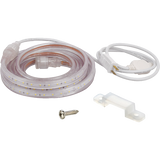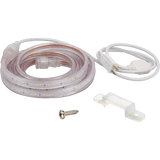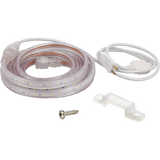How Are LED Drivers Used for Strip and Tape Lighting?
Posted by Nick on for ProLampSales
With LEDs taking up more and more space in home improvement stores, and different types being available from PARs to strips, to A-lamps, just buying an LED is a confusing experience for many consumers. The issue of purchasing a separate LED driver for some types of lights is an added layer of complexity.
All LEDs need a driver, but not every LED needs the driver purchased separately. The driver is a power supply that provide the LEDs with the right amount of power to turn on and perform efficiently, somewhat similar to the ballast used by fluorescent, CFL, and high intensity discharge (HID) light bulbs.
The problem comes in because some LEDs already have an integrated driver, or come with a driver included, while others need the driver purchased separately. This is especially the case for strip lighting.
In general, LED bulbs that can be screwed into a standard base or plugged in (GU10/GU24 bases) have an integrated driver so there is no need to purchase one separately. The lower-voltage LEDs like MRs and strips, however, often need a separate driver. This is why some strip lights come in a kit with the strip and the driver, while others are sold completely separately.
So why don't manufacturers just include a driver with every LED light strip? Take the case of one example LED driver: it can power up to 24 feet of strip lighting, or 13 individual LED strips. If the consumer already has a driver but just wants to add more lighting, then purchasing another strip will save money. Including another driver is unnecessary in this case.
This can make purchasing LED strip and tape lights a frustrating experience, as many consumers have not yet caught up to the new technical requirements of LED lighting. Strips are cool, unique, and offered in a variety of colors, but a power supply is always necessary for these lights, whether they are for household, business, or automotive use.
The best bet, as usual, is to check the manufacturer's specifications for their LEDs and drivers to determine when or if you need to purchase a separate driver or whether the lights you purchase come with an integrated one or a driver included as part of a lighting kit.
- Posted in LED
Featured Products (View All)
0 Comments




